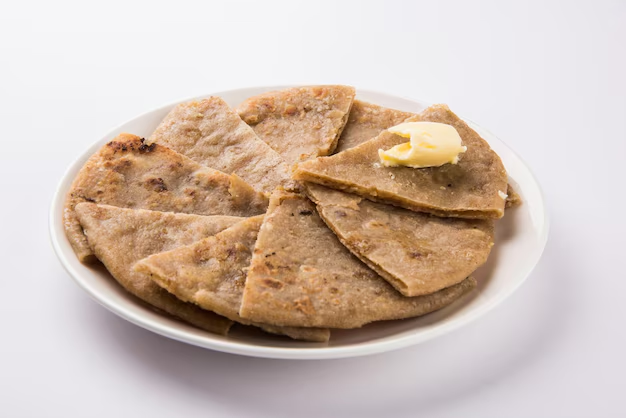Pune, known for its rich cultural and culinary heritage, is home to many traditional delicacies. One such gem is Shira Poli, a sweet dish beloved by generations. This delectable treat has deep roots in Maharashtrian cuisine and is often served during festivals, special occasions, and as an offering to deities. Shira Poli is an exquisite fusion of textures and flavors that celebrate the region’s culinary ethos.
Origins of Shira Poli
Shira Poli is thought to be a traditional Maharashtrian innovation, rooted in the state’s use of locally available ingredients like semolina (rava or sooji), ghee, and jaggery. Pune, as one of Maharashtra’s most historically significant cities, has been a culinary melting pot where dishes like Shira Poli have flourished.
Shira Poli evolved as a celebratory dish, with its origins tracing back to the popular Maharashtrian dessert Shira (also known as Sooji Halwa in other parts of India). Over time, a creative transformation took place where Shira was enclosed within a dough made from wheat flour, creating what is now known as Shira Poli. This dish is often seen as a more elaborate version of the simple Shira, and it adds a layer of texture to the already flavorful sweet.
Ingredients and Preparation
The preparation of Shira Poli is both simple and rich, requiring just a handful of key ingredients that are commonly found in Maharashtrian households. These include:
- Semolina (Rava/Sooji) – The star ingredient for the filling.
- Ghee (Clarified Butter) – Provides a rich and smooth texture.
- Sugar or Jaggery – Adds sweetness. The choice between sugar or jaggery can vary depending on the recipe or preference.
- Wheat Flour – For the outer dough.
- Milk or Water – Used to cook the semolina.
- Cardamom (Elaichi) – Adds a fragrant, aromatic touch.
- Dry Fruits – Cashews, almonds, and raisins are often added to enhance texture and flavor.
The preparation involves two main steps: making the Shira and preparing the Poli.
- Cooking the Shira (Filling)
The semolina is roasted in ghee until golden brown, giving it a nutty aroma. Water or milk is added, followed by sugar or jaggery. This mixture is cooked until it thickens into a smooth, fragrant filling. Cardamom and dry fruits are added towards the end to boost flavor. - Preparing the Poli (Outer Layer)
While the Shira cools, a dough is made from wheat flour and rolled into small discs. A portion of the cooled Shira is placed in the center of each disc, and the dough is folded over and rolled out carefully to ensure the filling is evenly distributed inside. - Cooking
The stuffed dough is then cooked on a hot griddle (tava) with ghee until golden and crisp. The result is a sweet, buttery flatbread with a soft, fragrant filling.
How to Enjoy Shira Poli
Shira Poli is traditionally enjoyed warm, often accompanied by a dollop of fresh ghee or a glass of milk. It’s served as a breakfast item, snack, or dessert, depending on the occasion. Its hearty and rich taste makes it a favorite during festive seasons, such as Ganesh Chaturthi or Makar Sankranti, when sweets are an integral part of celebrations.
Due to its filling nature, Shira Poli can be eaten on its own, but pairing it with milk or a light tea enhances the experience. For those who love to experiment, serving it with a light drizzle of honey or a scoop of vanilla ice cream creates a unique fusion of traditional and modern tastes.
Variants of Shira Poli
While the classic Shira Poli recipe is timeless, several regional and modern variants have emerged over time:
- Jaggery Shira Poli: A more traditional variant using jaggery instead of sugar, which gives the dish a rich, earthy sweetness.
- Coconut Shira Poli: A popular twist involves adding grated coconut to the Shira filling, enhancing the dish’s flavor with the tropical sweetness of coconut.
- Fruit-Infused Shira Poli: Some modern recipes incorporate dried fruits like figs or dates, or even fresh fruits like bananas, for a fruity twist on the traditional sweet.
- Healthier Versions: For health-conscious individuals, variations using whole wheat flour, reduced sugar, or alternative sweeteners like stevia have also gained popularity.
Rising Popularity in Modern Times
Despite the availability of global sweets and desserts, Shira Poli retains its place in Pune’s food culture. Its adaptability to modern tastes while preserving its traditional essence makes it a favorite among food enthusiasts. Restaurants and sweet shops in Pune, including popular establishments like Chitale Bandhu and Kaka Halwai, often feature Shira Poli as part of their festive sweet offerings, and many home cooks continue to prepare it as part of family traditions.
With growing interest in regional foods and the revival of age-old recipes, Shira Poli has garnered attention not only in Maharashtra but across India. Food bloggers and culinary influencers often highlight this dish, and its simplicity in preparation has made it accessible to new generations of food lovers.
Conclusion
Shira Poli is much more than just a sweet dish—it is a representation of Pune’s rich culinary heritage and the Maharashtrian ethos of celebrating food that is nourishing and flavorful. Its traditional preparation, involving locally-sourced ingredients, creates a unique harmony of taste and texture that continues to be cherished by both old and new generations.
Whether enjoyed as a part of daily meals or served during festive occasions, Shira Poli is a must-try for anyone looking to experience the authentic flavors of Pune’s traditional sweets. Its simple ingredients, yet rich flavors, make it a perfect blend of tradition and indulgence, ensuring it remains a beloved part of Maharashtra’s culinary repertoire.




